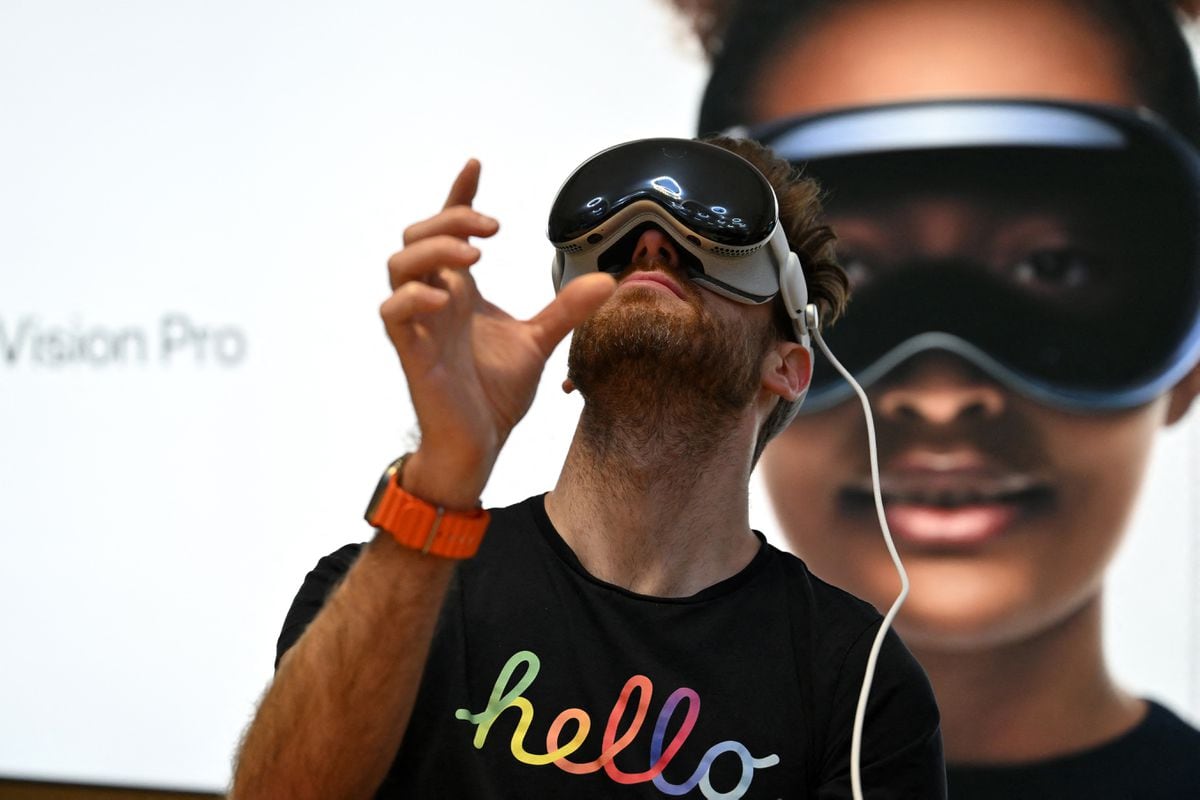More than 20 years have passed since the release of Minority Report (2002), Steven Spielberg’s film adaptation of a futuristic short story by Philip K. Dick, which turned into a major blockbuster. In the movie, Tom Cruise interacts with the hologram of a computer, opening and closing tabs and writing without needing a keyboard or mouse. The film was set in the year 2054, and for many, it was their first contact with what augmented reality (AR) could mean for everyday life. At that time, it was a dystopic vision. Now 2024 (much earlier than the film predicted) has kicked off with the launch of Apple’s Vision Pro augmented reality glasses, and images and videos have recorded people absorbed in their world while traveling on the subway or crossing a marked crosswalk.
This has reopened a debate that grabbed headlines in 2016 following the launch of the revolutionary video game Pokémon Go, which reached 232 million active users the year of its debut. The augmented reality game, which superimposes virtual elements on reality — unlike virtual reality, which immerses users in an entirely virtual environment — consisted of hunting Pokémons in the most unusual places in a city. The game was banned in countries such as China and Iran, which considered it a threat to public safety. Indeed, so many people were hurt trying to track down the creatures that the number of deaths began to be tracked. To date, 24 people have been killed and 62 injured. Eight years have passed between the launch of Pokémon Go and Apple’s Vision Pro glasses, but have we learned anything?
According to David Lindlbauer, professor at the Human-Computer Interaction Institute at Carnegie Mellon University, where he leads the Augmented Reality Laboratory, this technology has not yet become integrated into society. The key to its advance it what use it is given, he explains. “Escapism does not come from the medium of interaction [smartphone, television], but from the content [games, social networks]. AR gives us the opportunity to improve our lives by allowing us to do things that may be difficult, such as communicating with loved ones who are far away; sharing content in a fun way; being productive, but less stressed, or learning new things more easily,” says Lindlbauer by email.
But what does the data say? A research team from Stanford University published the first study on AR experiences after spending hours with Vision Pro glasses in public and private. One of the most significant findings of the paper — titled Seeing the World through Digital Prisms: Psychological Implications of Passthrough Video Usage in Mixed Reality — is that hand-eye coordination takes 43% longer when using digital glasses than without them, and that tasks such as eating or pressing buttons are particularly difficult due to the difference in spatial perception and size. “While the technology improves with every new headset and software update, passthrough falls far short of the human visual system — they are slower, grainier, and distorted, and cut off a large chunk of one’s field of view,” reads the study.
But perhaps most alarming is the social impact of the technology and the finding that “people in the real world simply felt less real.” The researchers emphasize how uncomfortable they felt interacting with other people while wearing the AR glasses. “Being in public could sometimes feel more like watching TV than interacting face-to-face,” the study explains.
The lead researcher of the study, Jeremy Bailenson, director and founding member of Stanford University’s Virtual Human Interactions Laboratory (VHIL), is clear about what the results mean. “AR should not be used all day, or even every day. Its strength has always been in its ability to provide us with special experiences, not continuous experiences,” he explains by email. According to Bailenson, users should not check email or watch movies with AR glasses. “In my laboratory, a framework has developed in recent decades. Through hundreds of studies, we have learned that immersive media is best reserved for experiences that in the real world would be ‘dangerous,’ ‘impossible,’ ‘counterproductive’ or ‘expensive.’” Training firefighters, rehabilitating stroke victims, learning art history through museums, and traveling back in time to understand climate change are some examples of these experiences.
Unlike virtual reality, which can lead to social disconnection, augmented reality can provide benefits without triggering social isolation. Users remain in the physical world at all times. That’s the argument made by Tim Cook, CEO of Apple, who says he is AR’s No.1 fan. He has gone so far as to predict that: “A significant portion of the population of developed countries, and eventually all countries, will have AR experiences every day, almost like eating three meals a day.” Cook has a vested interested in this outcome as he is betting everything on AR, trusting that this technology will complement or even replace the smartphone and computer, giving users greater connectivity and productivity and reducing technological distractions.
A study carried out by the U.S. consulting firm FinancesOnline indicates that AR could have a big impact on education and healthcare, as well as the video game industry. The technology, for example, could be used to promote mental health: both to diagnose mental states through facial expression (depression, anxiety…) and for treatment, such as providing images or sounds that could help cheer up users. However, according to Lindlbauer, more improvements are needed in AR hardware (it needs to be lighter, with a longer battery life and better ability to see others’ faces) and software (understanding of context, connectivity, privacy, and security).
Those reluctant to try the Vision Pro in everyday life can try more gradual approaches to AR, such as Ray-Ban Meta smart glasses, which can take photos and record videos of what is being seen. The devices have a microphone that allows users to talk on the phone and speakers that play music. What’s more, users can engage Meta AI, a conversational assistant, which can help with tasks such as choosing what to wear. This is a less intrusive approach to augmented reality, particularly when it comes to sound.
However, privacy remains one of the biggest issues, due to the threat of a possible leak of data stored by the user. “The lack of standards in XR [extended reality, the next step after augmented reality] threatens to create a fragmented surveillance society that does not serve humanity. What we need is a sustainable technology society,” Steve Mann, professor of computer engineering at the University of Toronto, says by email. “XR technologies have the potential to benefit humanity, but unfortunately, both the Vision Pro and the Meta Quest 3 are a kind of society of spectacular products that lack interoperability,” continues Mann, who is also the inventor of several AR devices, the author of more than 200 articles and owner of patents.
What we know is that AR is here to stay. According to Statista, the number of active users has quadrupled, going from 400 million in 2019 to 1.73 billion in 2024. Until more comprehensive and robust regulations are defined, it’s advisable to approach this technology with caution.
Sign up for our weekly newsletter to get more English-language news coverage from EL PAÍS USA Edition

Maria Malik is your guide to the immersive world of Virtual Reality (VR). With a passion for VR technology, she explores the latest VR headsets, applications, and experiences, providing readers with in-depth reviews, industry insights, and a glimpse into the future of virtual experiences.


